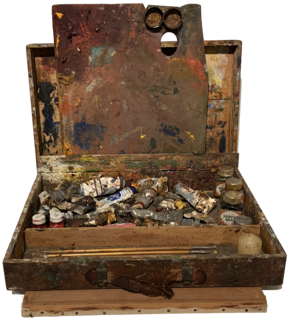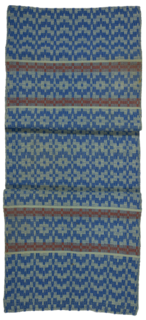
Historically inhabiting the eastern seaboard just south of their Zulu neighbors, Xhosa-speaking peoples represent one of the largest segments of the population in present-day South Africa. The visual arts of the various Xhosa-speaking cultures adhere to an immensely complex visual system that asserts cultural affiliation and individual status. In this system, locally specific colors and patterns can be linked to specific cultural divisions. For example, objects created by women artists from the Mfengu culture typically feature pink and light blue glass seed beads and Mother-of-Pearl Buttons. Perhaps the most recognizable object of adornment is the isibhingqelo, or breast wrap, which is worn over a woman's shoulders or wrapped under her arms to allow the beaded additions to be viewed by passersby, visually asserting her agency, status and identity.




